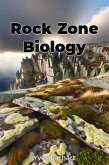Structured across 12 chapters, the book progresses from foundational concepts to urgent applications. Early sections map wind-dominated ecosystems and dissect survival mechanics, like birds harnessing updrafts for energy-efficient flight. Later chapters integrate field research, drone-mapped windflow models, and indigenous knowledge to show how symbiotic relationships stabilize fragile habitats. A standout feature is its interdisciplinary lens: spider silk from windy zones inspires engineering materials, while root systems inform landslide prevention. The final chapters confront dilemmas like wind farm impacts, arguing that conservation must balance renewable energy needs with habitat preservation.
Written with narrative flair, Wind Edge Species bridges complex concepts like boundary-layer dynamics with vivid examples, avoiding jargon while maintaining rigor. Its unique value lies in reframing wind as an evolutionary catalyst rather than purely destructive-a perspective critical for biologists, engineers, and policymakers alike. By merging micro-level adaptations with ecosystem-wide insights, the book transforms our understanding of life on the edge.
Dieser Download kann aus rechtlichen Gründen nur mit Rechnungsadresse in A, B, BG, CY, CZ, D, DK, EW, E, FIN, F, GR, H, IRL, I, LT, L, LR, M, NL, PL, P, R, S, SLO, SK ausgeliefert werden.









